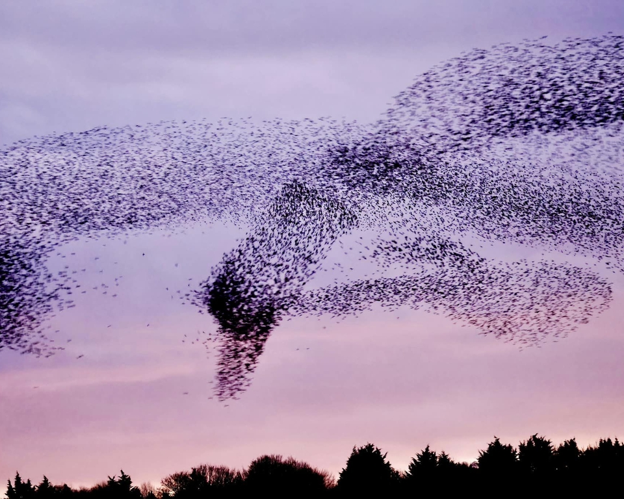If you are a Head of Operations or Head of People, you may not want to hear that your teams need to teeter on the Edge of Chaos! But bear with me as I explain why this matters.
In my previous post, I explained that transformation happens at The Edge of Chaos. If you can strike the balance between control (stability) and variation (experimentation), you are at The Edge of Chaos. If the balance becomes lop-sided, you will lose the ability to catalyse change (too much order) or the ability to scale your ideas (too much chaos):
-
Too much order > rigidity, bureaucracy lack of adaptability
-
Too much chaos > difficulties scaling, conflict, poor quality control
I opened this post with a picture of a surfer riding a wave. This is a great illustration of the Edge of Chaos. The wave is not rigid enough to be stable but nor is it chaotic enough to break. The surfer captures all this potential energy to ride the breaking wave (an emergent effect).
If the surfer on a wave isn't working as a metaphor, look at this elegant illustration of a Starling murmuration below (picture: courtesy of Yorkshire Wildlife Trust). Starlings are ferocious little birds who flock together and form complex shapes to ward off predators. Below, you can make out the shape of a large bird created by individual Starlings, each one following the same simple rules (fly close, match speed, avoid collisions):

Starlings are a perfect example of a Complex Adaptive System (CAS) operating at the Edge of Chaos:
- Parts (birds) recombine to become ‘wholes’ (shapes)
- These parts are not so strongly inter-connected that they become rigid
- They can fall apart and re-organise to respond to novel threats
- The parts follow simple rules (you can find out about these rules for Starlings here)
- But they are flexible and can keep re-organising
- There is no single point of control - the birds self-organise
Starling murmurations are emergent phenomena - this means that the sum of the parts becomes greater than the whole. Only Complex Adaptive Systems have these properties - a machine is no more than the sum of its parts. But like the Starling murmuration, a team (or team of teams) can come together and solve problems that can’t be solved individually. This is why the Starling murmuration is the metaphor we like to use when describing teams.
In a highly adaptive team, there is enough ‘glue’ for the team to be cohesive and well structured - but not so much that team members can’t experiment, offer novel solutions and try new things. I often use the word ‘design’ when I’m talking about the culture you need for The Edge of Chaos but ‘design’ is the wrong word. Complex Adaptive Systems aren’t ‘designed’ - they emerge from the recombination of parts. Building a culture and building teams that can achieve this is not about ‘designing’ something on paper. It’s about creating the conditions in which these characteristics can emerge.
There must be enough ‘order’ for the team to be cohesive. This might include:
- A clear understanding of purpose (why the team or business needs to exist)
- Goals (or missions) that galvanise effort
- Social norms that foster co-operation and learning rather than competition and blame
- Enough rules, process, technology to save you time …
- But not so much that you are constrained in the choices you can make
As businesses grow, they will wish to lay down rules and processes to make it easier to scale up (e.g. by teaching new employees what is required of them). Products and technology will emerge that can be standardised, simplified, automated and diffused. All this speeds up processing, removes variation (or informational ‘noise’) and makes the business more cohesive. Rules-based systems are more legible, easier to control (like the stuck together marbles I described here) and easier to scale.
But as they grow, they become more rigid. The magical space between order and chaos - The Edge of Chaos - recedes and transformation becomes more difficult. This is why large, rigid, bureaucratic organisations can be outcompeted by small, nimble upstarts operating at The Edge of Chaos.
At People Diligence, we believe that businesses can shape themselves to mirror natural systems so that, like the Starling murmuration, the parts of the business (people, teams, technology) can easily recombine to address novel threats or opportunities. This may sound difficult - or require lots of reorganisation of systems but this is not the case. In any business, there will be inert parts (technology, products, processes, machines) that cannot re-organise to respond to threats (or opportunities). Between these parts, you position people - each with enough autonomy and adaptability to recombine and respond to the threat.
The Starling Murmuration doesn’t work because the lead bird gives the rest of the birds a list of instructions - this would be rigid and the system would collapse every time it needed to change shape. It works because each individual bird has enough autonomy to make decisions while responding to a strongly felt overall need.
In a world of increasing complexity, rigidity is risky. If you want a business that can adapt, scale, and thrive – it needs to behave more like a murmuration. In my next post, I’ll explore how this might work.
-
Transformation occurs at The Edge of Chaos - this is the sweetspot between order (rules, processes, norms) and chaos (recombination, disintegration, trial and error)
-
You can’t design emergence but you can design the enabling conditions
-
As businesses scale, they risk becoming rigid but cultural tweaks can inject adaptability
-
Teams that self-organise can often solve complex problems - but only if the culture fosters autonomy and experimentation


